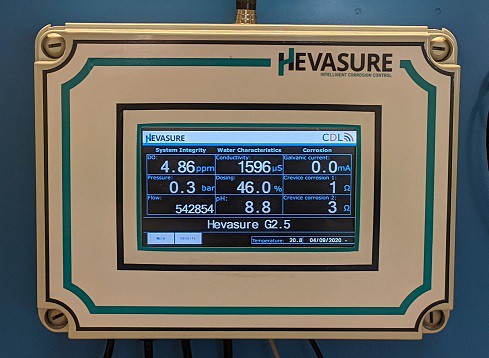Secure sites need secure monitoring

Secure sites need to be operational at all times without the risk of information breaches. Real time monitoring of critical infrastructure using the latest data collection and analysis tools can seem at odds with safety protocols – relying on cloud-based software to store information could leave these organisations open to cyber-attack.
There is no doubt that wireless protocols and building automation bring a host of financial, social and technological benefits, however, our increasing reliance on cloud-based systems leaves critical data vulnerable to security breaches.
As the pandemic took hold in March last year, we saw a significant rise in cyber-attacks on IT systems as hackers sought to exploit the confusion and chaos created by COVID-19. Mission critical facilities such as data centres, hospitals and government offices cannot afford to leave themselves open to such attacks.
When the stakes are this high, every part of the site must be secure and internet connectivity coupled with cloud storage provides an easy conduit for criminals. IT systems must be protected from cyber-attack, but facilities managers must also consider physical threats from infrastructure failure arising from poor maintenance practices.
Integral infrastructure
It stands to reason that secure sites usually have an important function – many are critical to modern society or national security. Operational certainty with minimal downtime is therefore essential.
HVAC has a crucial role to play in all our buildings by ensuring occupant comfort and, in the case of data centres, preventing downtime. Loss of critical cooling poses a huge threat to server rooms, as when servers become too hot, they start to perform inefficiently and unreliably. If exposure to extreme temperatures is prolonged, servers will shut down completely to protect themselves, causing lasting damage to equipment or large-scale loss of crucial data.
And, let’s not forget HVAC’s important role in occupant comfort - in sites such as hospitals, prisons and office blocks, the failure of these systems can lead to a building becoming uninhabitable in both winter and summer months
What is BACNet?
BACnet stands for Building Automation Control network, a data communication tool developed by ASHRAE. BACNet’s purpose is to standardise communications between building automation devices from different manufacturers, allowing data to be shared and equipment to work together easily. With so much innovation and growth in this area in recent years, BACnet has revolutionised building services communications.
Mitigating the threat of corrosion
One of the most dangerous threats to a HVAC system is corrosion, leading to expensive repairs and potentially catastrophic breakdown, not to mention the strain that this fouling will place on associated systems, leading to greater energy usage.
Using monitoring throughout the life of a closed-circuit water system will ensure these critical systems run at their optimum. Any anomalies within the system, such as oxygen ingress, water leaks, or loss of inhibitor or pressure can be identified and dealt with before they become major problems.
Where possible, this information should be collated and analysed to provide a true picture of system condition over a period of time. This way maintenance practices can be more tailored and fit for purpose, extending operational life and ensuring interventions only happen when necessary.

Constant, real-time monitoring also helps to cut site visits. Water sampling and analysis can be significantly reduced which, at the moment, has a particular benefit in the fight against COVID-19, helping to reduce travel and human interactions.
Overall, for secure sites where contractor clearance is essential, by reducing uncertainty, off-plan call-outs should also cut costs, paperwork and risk.
Safe data acquisition
But how can real-time monitoring and the subsequent collation of data sit alongside the need for cybersecurity?
We use BACnet within the secure version of our real-time HVAC monitoring technology, which enables integration with a building management system (BMS), while being suitable for environments where the use of cloud storage is prohibited. Hevasure Aquila S utilises inbuilt logic to provide intelligent messages, aiding diagnosis and appropriate intervention, without the use of cloud storage. Real-time measurements are sent to the BMS and any changes that exceed pre-set limits trigger alarms.
A secure future
Data, its collection and analysis is key to the efficient running of our buildings and our lives in general. During the pandemic, our reliance on automated systems for both home and personal life increased exponentially.
Following the first UK lockdown in March 2020, almost 47% of employed people did some work from home – many have still not returned to the office, instead using the internet and a series of apps and programs to keep them connected with colleagues and customers. This trend and its demand on the digital is only likely to increase.
As humans and our buildings of work, security and health rely more and more on data, it’s essential that this invaluable tool of the modern world is used properly and kept safe.
Steve Munn is MD for Hevasure







